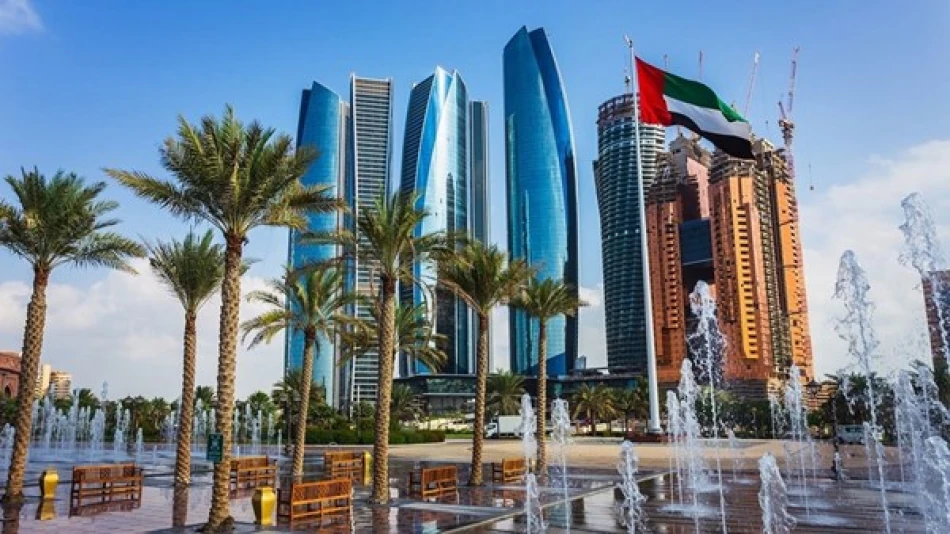
Chance of Thunderstorms and Downpours Expected Tomorrow
UAE Braces for Mixed Weather Conditions as Summer Heat Intensifies
The UAE's National Center of Meteorology forecasts a day of contrasting weather patterns tomorrow, with clear to partly cloudy skies giving way to potential thunderstorms in eastern and southern regions. As temperatures soar to 47°C in some areas, the country's diverse geography will experience everything from coastal humidity to inland heat waves, highlighting the challenging climate conditions that shape daily life and economic activity across the Emirates.
Regional Weather Variations Paint Complex Picture
Tomorrow's weather map reveals the UAE's stark climatic diversity. While most areas will enjoy clear to partly cloudy conditions, the eastern and southern regions face the possibility of cumulus cloud formation accompanied by rainfall. This pattern reflects the country's unique position between desert and sea, where geographical features create distinct microclimates within a relatively small area.
Humidity will dominate nighttime and early Sunday morning conditions, with light fog potentially forming over coastal areas and western inland regions. This moisture buildup is typical for the UAE's summer months, when the combination of high temperatures and Gulf waters creates challenging atmospheric conditions.
Temperature Extremes Across the Emirates
Inland Areas Bear the Brunt
The forecast reveals punishing temperatures in inland locations, with Liwa and Al Silaa both expected to reach 47°C. Al Ain, the UAE's garden city, will see temperatures climb to 46°C, while Dubai and Abu Dhabi face highs of 45°C and 44°C respectively. These extreme temperatures underscore the intense summer conditions that drive the country's massive energy consumption for cooling.
Coastal Relief Offers Little Respite
Even coastal areas, traditionally offering some relief from desert heat, will experience significant temperature spikes. Fujairah, typically the coolest emirate due to its mountainous terrain, will see a more moderate 35°C maximum. However, humidity levels reaching 85% in some coastal areas will make conditions feel considerably hotter than actual temperatures suggest.
Maritime Conditions Remain Stable
Both the Arabian Gulf and Sea of Oman will experience light to moderate wave conditions, providing favorable circumstances for maritime activities and offshore operations. The stable sea conditions contrast with the more volatile atmospheric patterns, offering some consistency for the UAE's crucial shipping and offshore energy sectors.
Tidal patterns show typical Gulf characteristics, with the Arabian Gulf experiencing high tides at 19:29 and 08:14, while the Sea of Oman sees its peaks at 15:14 and 06:13. These predictable patterns support the country's extensive maritime commerce and fishing industries.
Economic and Social Implications
The extreme temperature forecasts carry significant implications for the UAE's economy and society. Peak summer conditions like these typically drive electricity consumption to annual highs, testing the country's power grid capacity. The construction and outdoor service sectors, which employ hundreds of thousands of workers, will need to implement strict heat safety protocols during midday hours.
For the tourism sector, these conditions reinforce the importance of indoor attractions and evening activities during summer months. The weather patterns also highlight why the UAE has invested heavily in climate-controlled environments, from massive shopping malls to covered walkways, as essential infrastructure rather than luxury amenities.
Climate Adaptation in Focus
This weather forecast exemplifies the climate challenges that have shaped UAE policy and development strategies. The extreme heat and humidity levels demonstrate why the country has become a global leader in desalination technology, air conditioning innovation, and sustainable building design. As climate change intensifies regional weather patterns, such forecasts serve as daily reminders of the UAE's ongoing adaptation efforts and the critical importance of climate resilience in urban planning and economic development.
Most Viewed News

 Layla Al Mansoori
Layla Al Mansoori






